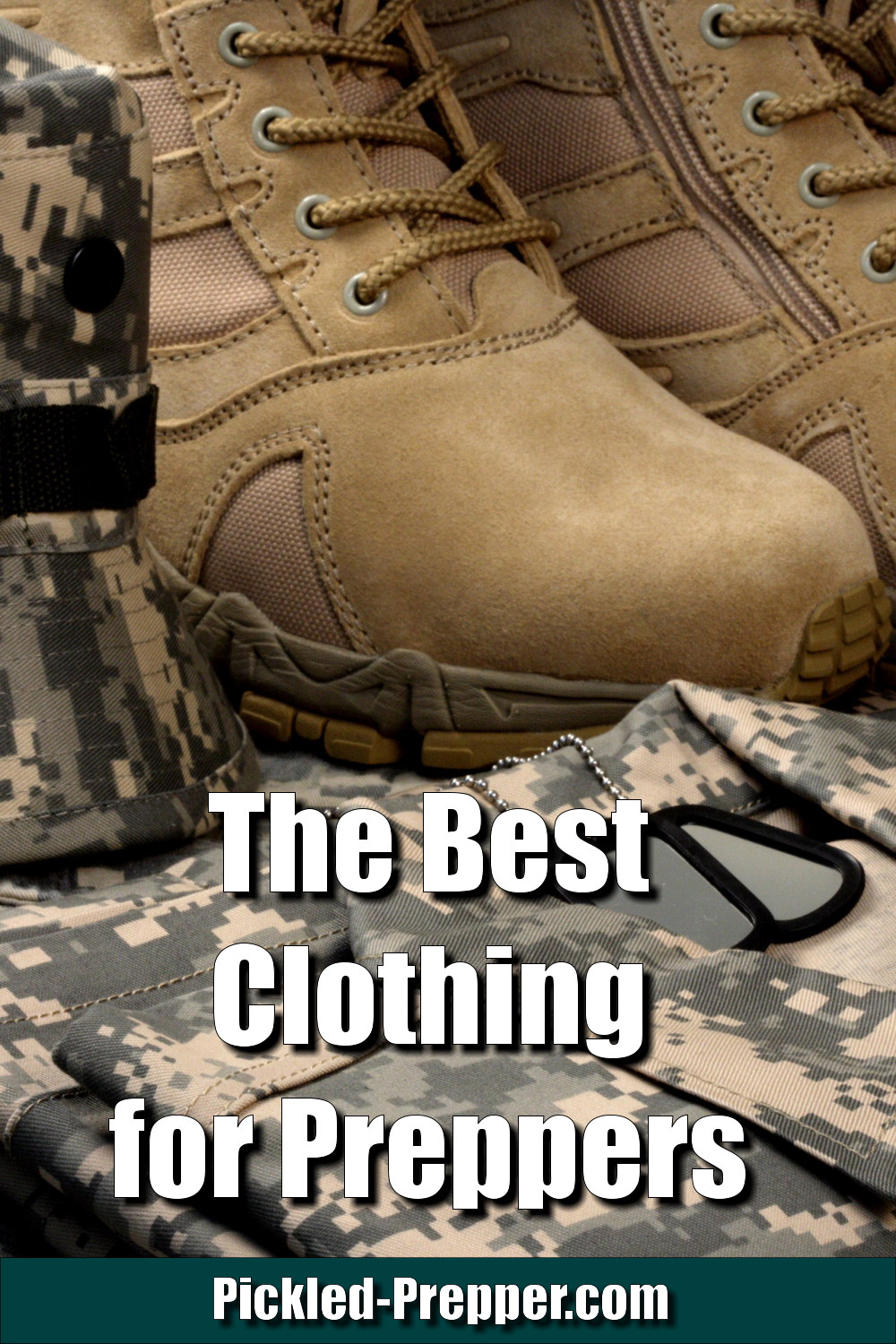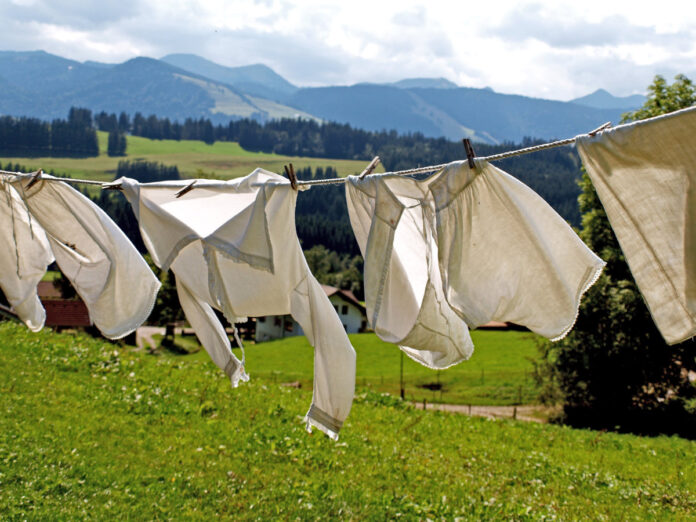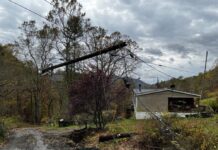What to Wear at the End of the World
Besides the food and prepping supplies I wrote about in yesterday’s post, we also retrieved five buckets and a cardboard box of clothing and footwear that had been packed away in the storage unit.
My wife and I a few light moments of fun opening up our stored clothing, which we had not laid eyes on since 2013. Mos of mine was T-shirts, socks, and old BDUs and tactical pants. I don’t really need the latter because in the intervening years up a new pile of “old” pants has built up, so we’re giving mine to charity.
My wife enjoyed finding some of her shirts and plans to add a few of them back into her daily wardrobe. She held up one pair of shorts and said, “I never liked these and I still don’t!” Gave us a laugh. But she did find a pair of pants that may become a “new” pair of gardening pants.
With the exception of some elastic waistbands, the clothing had held up well. The plastic buckets kept the clothes completely clean and bug-free. I can’t say the same about cardboard boxes as we found the bodies of dead spiders and other insects in clothing stored in the box.
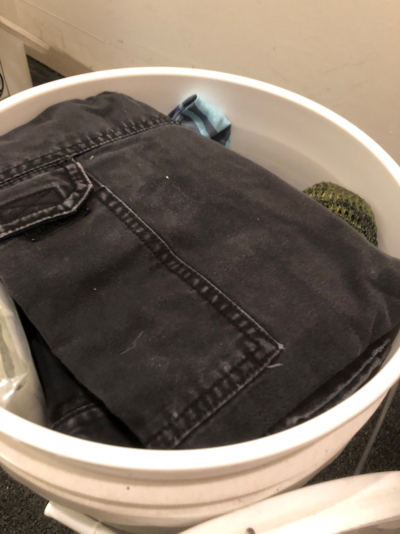
Treat Your Feet Right
In addition to the clothing, we each had boots packed away. The boots – mine were an old pair of Altama combat boots and hers were snow boots – appear to have held up well. We will need to wear them a few times to be sure. I have heard anecdotally that shoe soles can delaminate and boot soles separate from the upper in five to seven years. (Apparently the glue or adhesive they use doesn’t last.) My military boots had the soles stitched on, so hopefully this will not happen to them. The implication, however, is that you should rotate out any stored boots or shoes every three years or so, just to be safe.
Whenever I get new boots, I keep the old pair for gardening or construction work. That gives me one nice pair for everyday wear and one scuffed, worn pair for those times when you know you are going to get dirty. I also own another pair with safety toes and an insulated winter boot, so at any given time, I have four pairs of boots and a number of shoes. In a grid-down situation, this should last several years, and that’s critical, because the ability to cobble our own shoes is a long-lost skill set for most Americans.
The Best Clothing for Preppers
When selecting clothing and footwear to put in your survival cache, it’s important to keep in mind that living in a TEOTWAWKI situation will require tough, durable clothing and footwear.
In a life with no electricity or other utilities, you should expect to be working outdoors doing things that result in you getting dirty, like raising food, gathering firewood, or patrolling the area. You should expect your apparel to become soiled and worn, and you should select your prepper clothing accordingly.
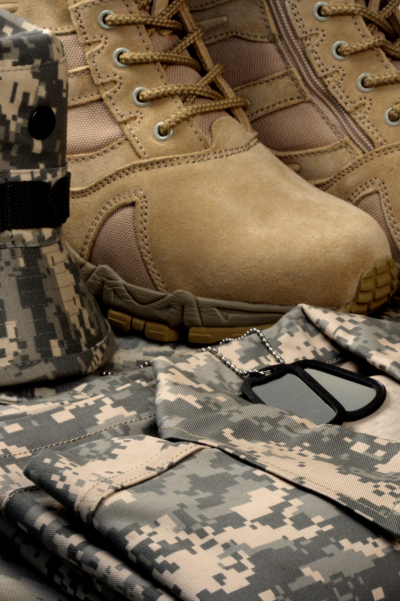
I consider military surplus clothing or workwear because these items are designed to be worn in the field, as opposed to in the house or offices. I want clothing that won’t rip or tear, can take some abuse, and are thick enough to offer protection from the elements. Nylon cotton blends (NYCO) are the most durable, and the fabric used in many mil-spec uniforms, but it can be rough on your skin and may lead to chafing if the clothes are not well fitted. Poly/cotton may be softer and more comfortable. A good pair of BDUs, ACUs, or tactical pants will usually offer rip-stop fabric, a double seat, reinforced seams, and large, tough buttons.
I would respectfully suggest that a disaster is not the time for flip-flops, sandals, sneakers, and other light-weight shoes, with only a few exceptions. I recommend hiking boots, tactical boots, work boots, or combat boots that are designed and manufactured to last at least a couple years.
Consider Task-Specific Clothing
I wear a special bee-proof suit I wear when I am checking the hives and harvesting honey. I wear an entirely different outfit for going turkey hunting, but both are task-specific. Consider what you may be doing and buy or store clothing for those specific tasks.
Sure, basic workwear can cover a wide spectrum of tasks, but there’s a reason loggers wear special boots. If you plan on running military-style patrols, consider camouflage. If you need to maintain barbed wire fencing, make sure the correct pair of gloves in your tool kit. Do you sunburn easily? Pack away a broad-brimmed hat, or two. If your feet get cold, make sure you store wool socks and insulated boots. If you muck out stalls, store an extra pair of the appropriate boots.
And if you already own these items, store an extra set, even if it is an older pair you were ready to retire. That old pair of pants may be faded and stained, but when the SHTF, you’ll be thrilled to pull it out when you blow out your other pair. Stock needles and thread, too. You may need to repair items you would toss out today.
Don’t Skimp on Outerwear
In a world without utilities your will be the mercy of the weather. Unless you live in the Deep South, you will need rain suits or ponchos, snow suits, bibs, thermal underwear and plenty of layers. If you already own hunting gear, ski clothing or snowmobile suits, they may suffice, but I also recommend redundancy. In other words, you should multiple coats and jackets to address a range of temperatures and weather conditions.
Thermals, or a base layer, are required in many climes, followed by layers of outerwear for added warmth. You can wear fleeces, sweaters, sweatshirts, or vests under your shell or outer layer and remove or unzip as you warm up.
Advanced synthetic materials are lightweight and perform well, but wool is always a good fallback in the cold weather. Yes, Gore-Tex and similar technical fabrics offer wind and water resistance, but wool may outlast them and be quieter in the field. Of course, wool is unlikely to come in all those cool camo colors…
If you don’t own any workwear, take a look at what the next farmer you see is wearing. Look at the gear on the next road crew when you pass by. They may be wearing coverall, overall, or bibs, all of which are good choices in the cold. The materials used on workwear are often heavy cotton duck or a thick poly/cotton blend. That’s the standard you want when you head into the unknown.
Protect your Hands
Maybe you think gloves are designed to keep you warm, but in a survival situation, they are also designed to protect your hands. I’m talking leather work gloves that will allow you to use that shovel, hoe, rake or saw for far longer than you can barehanded. Unless you have calluses built up over months of hard work, work gloves are critical to getting the job done without blister and rawness.
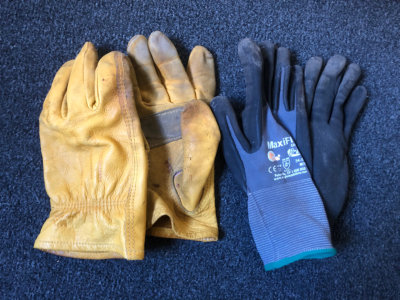
The military found that skin over the knuckles is especially vulnerable, which is why hard-knuckle gloves and padded-knuckle gloves were developed. Skinned hands, cracked skin, and cuts on the fingers or backs of your hands may sound like minor issues but when they provide an avenue for infection and reduce your ability to work, you’ll realize why work gloves are an important addition to your prepper cache.
Oh, and don’t forget cold weather mittens and gloves.
Speaking of protection, determine whether you have sufficient knee pads, safety glasses, ear plugs, chain saw chaps, and other protective gear you might need after the store shelves are stripped clean.
Washing your Clothes Under Primitive Conditions
Washing your clothes is important for the obvious reasons of hygiene and will help prevent the growth of fungus and mold in the cracks and crevices of your body. Clean socks and underwear are critical to avoid rot and annoying, painful, or itchy infections. Removing the dirt will also help your clothing last longer because dirt wears away at the fibers over time. If you are unable to use a traditional washing machine, then you must revert to hand washing. Somewhere in between machine and hand washing is the bucket method. Here’s a brief rundown on the bucket method:
Soak clothing in a five-gallon pail with some laundry detergent or soap, if available. Work delicate or thin items with your hands, squeezing and kneading them many times to coax off the dirt that is clinging to the fibers. For items that are less delicate, rub them against an old-fashioned washboard or scrub stained or dirty items with a brush. Agitate them in the bucket with a plunger or smooth stick, using an up-and-down motion. Then rinse in another bucket or a series of buckets to remove any soap residue. Manually squeeze or ring clothes to remove excess water and hang on a clothesline or throw over a railing or convenient bush.
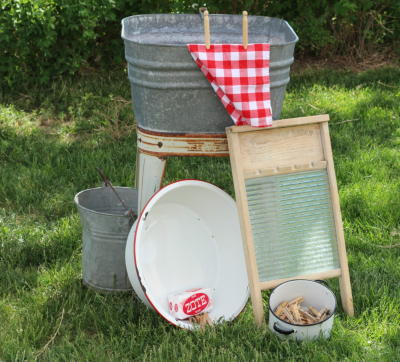
Adapt as necessary. For example, you can use your tub instead of a bucket and you can add water heated over a fire. In fact, you may want to clean yourself in the tub and then use the water to wash your clothes.
A Change of Clothes is Important
How often you wash your pants and shirts will depend on what you are doing and how dirty you and they get, but as a good rule of thumb: If the look or smell dirty, then they are dirty and in need of a wash.
Your underwear, socks and base layers should be changed daily, if possible, even if all you can do is rinse them in a creek between wearings. If washing is impractical, exposing them to a few hours of sunshine (turn each item over and inside out to expose every area to the sun) can help destroy odor-causing molds and fungus.
Clothing is Shelter
Preppers talk about food, water and shelter, but we often forget that clothing is shelter. Yes, we all would like to retreat a warm, cozy cottage, but regardless of whether you are living in a castle or a cave , your clothing is your first and most important form of shelter. Plan accordingly!
If you enjoyed this article, you might also like How Preppers Should use MREs in a Food Storage Plan.
